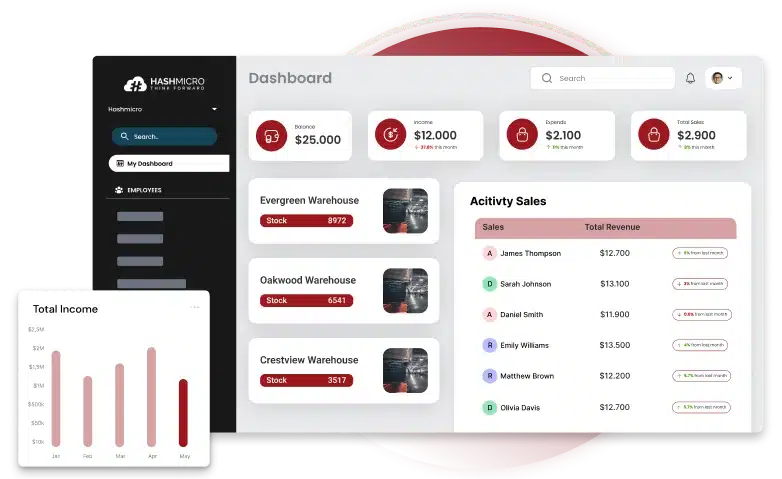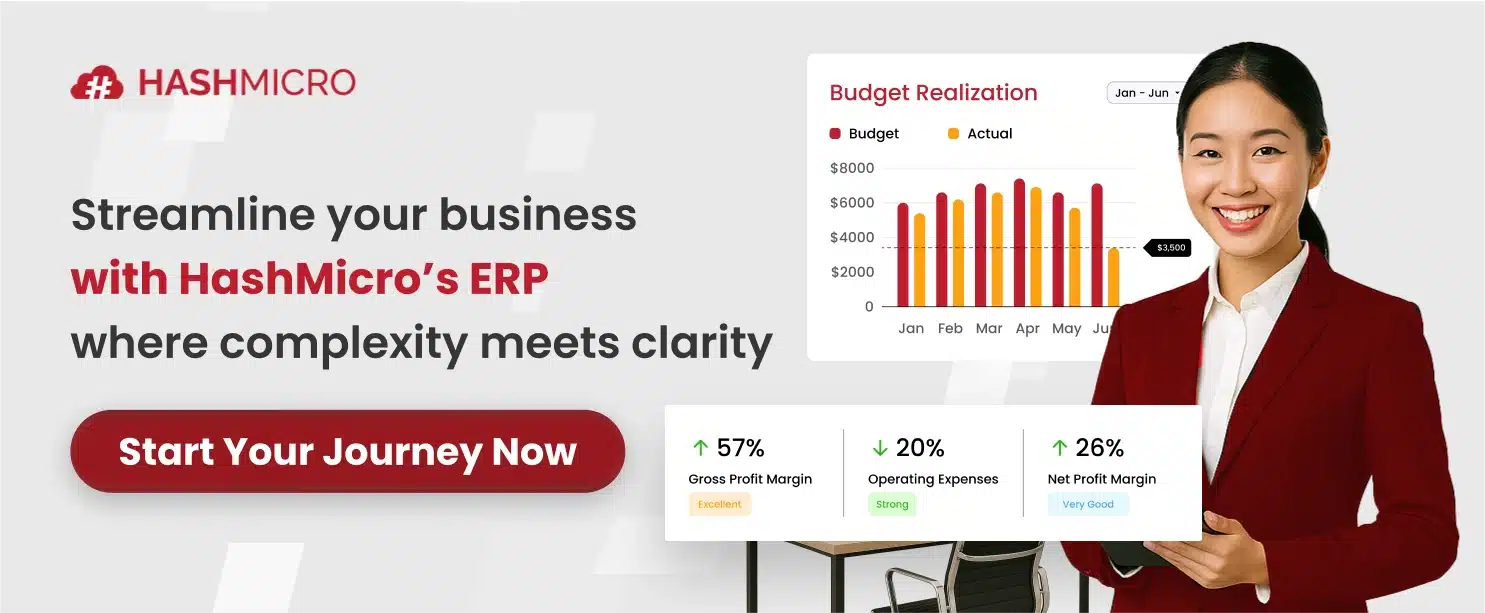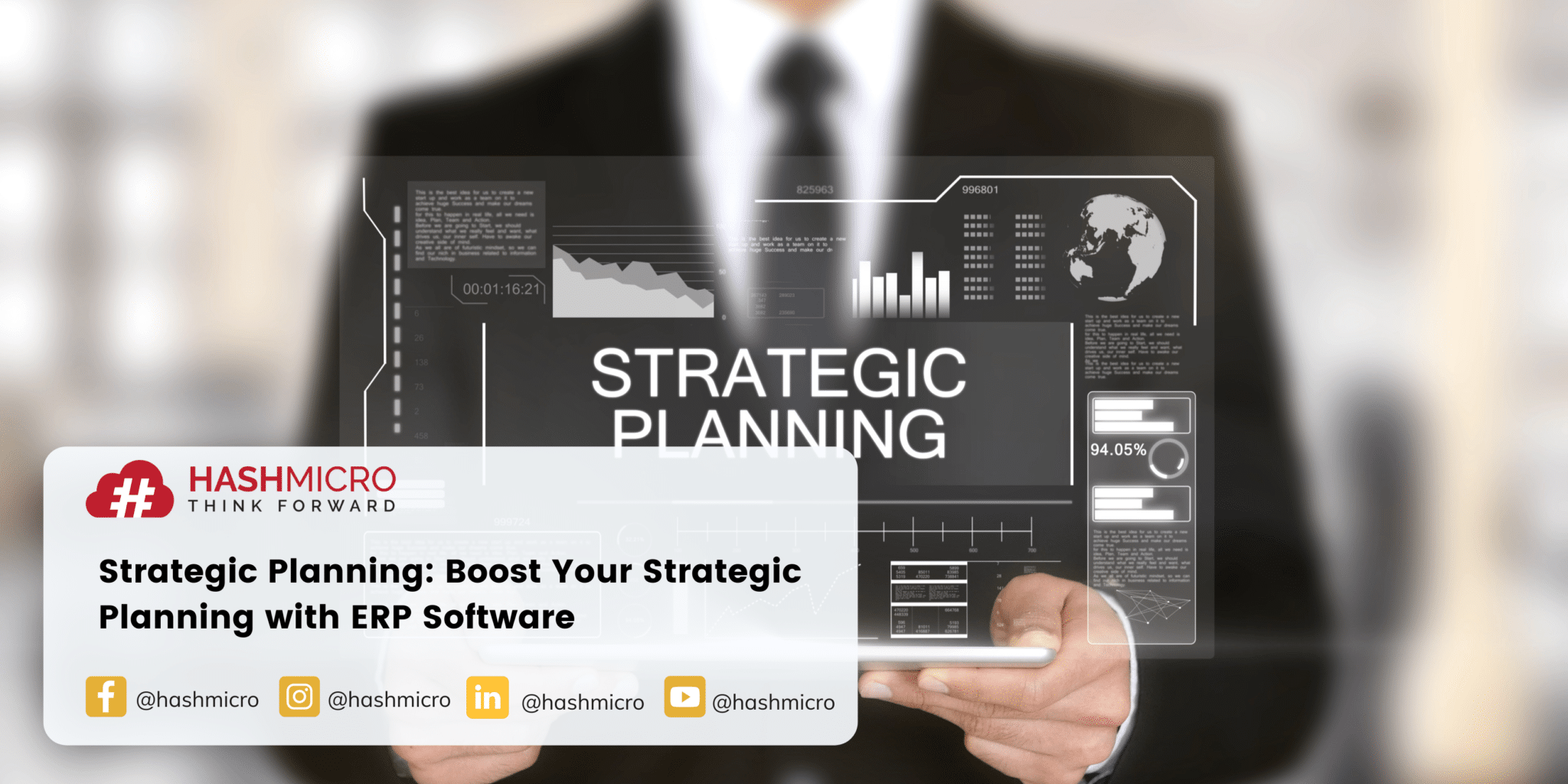I’ve found that ERP systems offer more than just data storage and task automation; they can also enhance strategic planning for my company. By centralizing information, I can get a clearer picture of operations and make more informed decisions.
Using a cloud-based ERP, I’m able to streamline daily workflows and stay on track with short-term objectives. This helps ensure that every step we take aligns with our broader business goals.
The system also allows me to plan for the future. By analyzing insights and projections, I can make critical decisions that guide the company’s growth and make it easier to plan strategically. over the next few years.
Key Takeaways
|
What is Strategic Planning?
Strategic planning involves setting the direction for an organization and determining how to allocate resources effectively to achieve long-term objectives. It turns broad goals into clear, actionable steps that guide daily operations and decision-making.
By creating a structured roadmap, strategic planning helps organizations anticipate challenges, prioritize initiatives, and ensure that teams are working toward common objectives. This process ultimately supports sustained growth and long-term success.
How Does ERP Work?
ERP is a system that helps you plan and improve business efficiency. It collects data, stores, interprets, and analyzes it. The data come from various departments such as production, finance and accounting, HR, procurement, sales, and so on.
You also can share data in real-time with external stakeholders such as vendors, customers, and partners in one platform. With ERP, it also help businesses improve and scale processes and enhance resource management.
Related article: Business Development Strategies for Business Growth
ERP Software for Strategic Planning
A well-defined ERP strategy is key to successful implementation. It’s not just about choosing software but transforming business processes to support organizational goals. This includes reviewing current systems and identifying essential customizations.
Define ERP across your enterprise
Stakeholders often have different views of “ERP,” which originally evolved from MRP II in the 1990s. Many still see it through legacy systems, risking overlooked smaller or standalone solutions and under-scoped requirements.
Expanding ERP understanding to include modern functionalities ensures a complete, future-ready strategy that addresses all critical business areas and avoids gaps in implementation.
Review existing aolutions across key business domains
The first step in crafting an ERP strategy is to thoroughly assess the current technology and systems used in areas like finance, operations, sales, and marketing. This evaluation should examine both system performance and integration, identifying gaps or inefficiencies.
Identify key IP and custom solutions
Organizations often rely on proprietary systems or unique intellectual property that provide a competitive advantage. It’s essential to recognize these assets so that the new ERP can either integrate with or replace them while preserving functionality and data integrity.
Review and document organizational structure
A clear understanding of the organizational structure is vital. This includes mapping decision-making processes, data flows, and interdepartmental dependencies to ensure the ERP system enhances operations rather than disrupts them.
Determine requirements and asses ERP readiness
Selecting the right ERP system begins with a clear understanding of the organization’s needs and readiness for change. This includes analyzing technical requirements, evaluating compatibility with current processes, and assessing operational workflows.
Additionally, establishing a realistic implementation timeline, securing executive support, and defining a budget are critical to ensure the ERP aligns with both strategic goals and organizational culture.
Identify and determine: need, time, sponsorship, and budget
A successful ERP strategy begins with clearly defining the organization’s needs, implementation timeline, leadership support, and budget. Establishing these elements sets realistic expectations and ensures the project.
Organizations also should review existing solutions to identify inefficiencies or redundancies, including legacy systems that will remain. Analyzing business processes helps determine the specific functionalities required in the ERP.
Key Steps in Implementing Strategic Planning with ERP System

There are several steps in strategic planning before you can finally carry out the new strategies and their positive impacts on the company. We are going to break down the steps and elaborate on how ERP can make the most of these crucial processes.
Clarifying your vision
The purpose of goal-setting is to clarify the vision of your business. This stage includes three key elements:
- Define both short- and long-term goal
- Identify the processes that can help you achieve that goal
- Socialize the process with the employees and give them clear tasks
Make sure that these targets are detailed, realistic, and harmonize with the value of your vision. The most important thing in this stage is communicating these targets to your stakeholders and employees.
ERP helps you in delivering this information to many people on one platform. Don’t worry if in conveying these targets you are stating some confidential information. You can easily manage the document access right and the system ensures data security.
Collect and analyze information
An analysis is a crucial stage because the results will affect the next two stages. In this stage, you can start by collecting information and relevant data that can help you achieve your vision.
You should focus on what the company needs to sustain its entity and grow. It should be based on the SWOT (strength, weakness, opportunity, threat) analysis.
As a system that digitizes daily business operations, ERP can provide you with accurate data regarding your business performance so far. You can generate the reports in a few seconds and the data will display in which part your strengths and weaknesses are.
ERP system also analyzes market trends and forecasts the company’s needs with its historical data analysis. It will help you prepare the strategy for the foreseeable market demand.
Formulate the strategy
The first step in formulating the strategy is to review again the analysis. Then, what you should do next is decide what resources your company currently has that can help reach the defined goals.
The issues should be prioritized by their importance to your success. After it is all settled, then you can start formulating the strategy. Make sure that you come up with several alternative plans because the business situation is very fluid.
Thankfully, ERP has covered a project management system that can help you solve all of those issues while you’re preparing the strategy. It helps you solve it with minimum cost, well-tracked progress, and efficiency.
You can input, prioritize, assign, and set the deadline for the issues. Both the internal team and external team can work and collaborate well because they can share data and information in real time.
Strategy implementation
Successful strategy implementation is critical to the success of the business venture. This is the action stage of strategic planning. So, everyone in the company should know their responsibilities, tasks, and target fulfillment.
An ERP system that is integrated into all departments facilitates this stage. Everyone can access their task list and monitor its progress for optimal implementation. Moreover, with KPI management, you can measure how your employees’ performance is.
Plan for change management and training
A strategy must include a comprehensive plan for managing organizational change, communicating the benefits of the new system,and providing through user training and ongoing support o ensure adoption and success.
Document integration into operations
Clearly define how the ERP system will be integrated into daily operations and existing business processes to ensure a seamless transation and continuous support.
Evaluate and control
Evaluating and controlling the established strategies involves measuring the performance, reviewing internal and external issues, and carrying out corrective actions when necessary. Then, compare the actual results versus the plan.
ERP that stores business operational data can provide you with the comparison and point out the significant changes. You can generate the reports anywhere at any time accurately.
Here is a table summarizing the key steps for implementing strategic planning with an ERP system, making it easy to understand.
| Key Steps for Implementing Strategic Planning with an ERP System | Description |
| Clarifying your vision | Set clear, realistic goals, assign tasks, and communicate them effectively. ERP ensures secure and easy sharing with all stakeholders. |
| Collect and analyze information | Use ERP to gather data, assess SWOT, track performance, and forecast trends to support informed strategic planning. |
| Formulate the strategy | Review analysis, identify resources, prioritize issues, and create flexible plans. ERP tools help track tasks and enable real-time team collaboration efficiently. |
| Strategy implementation | Execute the plan by assigning clear responsibilities and monitoring progress. ERP integration allows task tracking and KPI-based performance measurement. |
| Plan for change management and training | Develop a clear plan to manage change, communicate ERP benefits, and provide user training and support for smooth adoption. |
| Document integration into operations | Define how the ERP system will fit into daily workflows and business processes to ensure seamless implementation. |
| Evaluate and control | Monitor performance, address issues, and take corrective actions while comparing actual results with planned goals. |
Also Read: Best ERP Software Recommendations – Explore the best software options available this year and find the right fit for your business needs.
Streamline Your Strategic Planning with HashMicro’s ERP System

HashMicro’s ERP system offers an all-in-one solution for companies in Indonesia aiming to optimize their strategic planning and overall business operations. The platform centralizes key processes to ensure efficiency and informed decision-making.
With an intuitive interface and AI-powered tools, HashMicro ERP enables seamless management of core operations, from financial planning and inventory control to procurement and performance tracking.
Key features of HashMicro’s ERP System that designed to support strategic planning include:
- Real-Time Activity Monitoring: Track operational workflows across departments to ensure accountability and accurate reporting.
- Mobile Access: Review critical business data and updates anytime, anywhere through Android and iOS applications.
- Performance Metrics Tracking: Set targets for teams and evaluate progress against goals to enhance productivity and decision-making.
- Data Integration: Connect information from multiple internal and external sources to support data-driven strategies.
- Business Insights: Analyze trends and operational performance to optimize planning and resource allocation.
- Top Performer Analysis: Identify high-performing products, services, or teams to inform promotional strategies and improve resource management.
Conclusion
HashMicro’s ERP system is a robust solution for strategic planning, helping manufacturing companies align their operations with overall business objectives. It integrating finance, production, sales, and inventory management into a single platform.
The system provides real-time insights and analytics, allowing companies to monitor performance, anticipate market changes, and make informed decisions. This capability ensures that products meet quality standards.
With HashMicro ERP, businesses can streamline workflows, reduce inefficiencies, and implement data-driven strategies with confidence. Its comprehensive features empower companies to plan for growth. Click here for a free demo of the best ERP software!
Warning: Undefined array key "med" in /home/hashmicr/public_html/blog/wp-content/plugins/insert-headers-and-footers/includes/class-wpcode-snippet-execute.php(419) : eval()'d code on line 281

Frequently Asked Questions
-
What is strategic planning in a business context?
Strategic planning is the process of defining a company’s long-term goals, allocating resources, and setting a roadmap for growth over the next few years.
-
How can ERP software support strategic planning?
ERP centralizes data, automates operations, and provides real-time insights, helping businesses make informed decisions and align daily activities with long-term goals.
-
Can cloud-based ERP improve decision-making for the future?
Yes. By analyzing trends, forecasts, and performance metrics, cloud ERP enables companies to take proactive steps and plan effectively for sustainable growth.














